Slavery in Colonial America was not confined to the southern plantations. New England ports were the northern tip of the “Triangle Trade” in molasses, slaves and rum, and were involved in the slave trade almost from its beginnings. It was not uncommon at all for New Englanders to hold slaves, especially those wealthy merchants in seacoast towns.
Portsmouth, New Hampshire, was an important Colonial port, where Africans arrived as “cargo” on slave ships built in Portsmouth and were immediately auctioned from the slave block on Long Wharf. Most went to become household servants in the elegant homes that are today preserved as museums and as part of the historic village of Strawbery Banke Museum, a few steps from the wharves.
A census of 1775 shows that 656 Africans were enslaved in New Hampshire, most in the seacoast area. Elsewhere there are hints of this — the Sandown (NH) Meetinghouse has a slave gallery, for example — but Portsmouth has gathered the information on Black culture of the Colonial, Federal and later eras and brought it together into more than a few fragmented footnotes to history.
The Portsmouth Black Heritage Trail is the result of years and years of painstaking research by the trail’s founder, Valerie Cunningham. It was Valerie who tracked down the stories told on the signs and in the self-guided walking tour, personal stories that make the history real.
The trail takes visitors to two dozen sites where Portsmouth’s Black residents lived, worked and prayed over the course of three centuries, illuminating people and events that have been largely omitted from history books. Bronze plaques identify the sites and tell the stories. The trail winds through the streets of the historic center, from the wharves along the Piscataqua River to the African Burying Ground on Chestnut St.
With the printable map, an audio guide or the illustrated guidebook available at the Black Heritage Trail office on Court Street, just off Market Square, visitors can begin at any point. We begin at the spot where enslaved passengers — those who had survived the unthinkable conditions of the voyage on a slave ship — arrived and were sold right on the dock at Long Wharf.
Some signs are at well-known historic sites, showing a different side of these landmarks. The owner of the William Pitt Tavern, now part of Strawbery Banke Museum, owned and auctioned slaves, and the sign at his tavern tells how slaves were “invisible” in the eyes of the law. This protected them from being punished for crimes that their masters or others ordered them to commit.
Several other buildings in Strawbery Banke Museum were owned by slave-holders. Both the potter and the cooper owned slaves, and King’s Arms tavern owner James Stoodley enslaved two people, as did merchant-farmer Joseph Sherburne, whose home is also part of the Portsmouth Black Heritage Trail.
Along with pointing out landmarks, the trail has prompted some of the city’s outstanding historic homes to delve into the lives of their African residents and the activities of their owners. As part of its outreach programs the Moffatt-Ladd House, a National Historic Landmark, has presented Zoom lectures and discussions about the history of slavery in New England, and initiated lesson plans for teachers on “Reaching for Truth: Exploring the Issue of Slavery in the Era of the American Revolution,” offering an annual teacher workshop on the program.
The stately 1718 Warner House, one of the finest examples of early brick buildings in New England, has incorporated extensive information about its enslaved residents into its historical information for visitors, thanks to Valerie Cunningham’s research. A rough wooden shack once stood behind the house, home to enslaved domestic servants, and a visit to the house reveals the stories of some of them. Two stand out especially.
Cato and Peter were enslaved by John Warner, and in 1779 they and 18 others signed a Petition of Freedom to the New Hampshire legislature requesting an end to their servitude. The language of the petition echoes the ideas and rhetoric of the Continental Congress, and is thought to have been written by Prince Whipple, a literate slave of William Whipple of the Moffat-Ladd House. Prince Whipple went to Philadelphia with William and would have heard the discussions and debate there. The petition, however eloquent, was denied.
Although northern slave-holders preferred young Africans whom they could train as domestics (as opposed to plantation owners who preferred men who could do sustained heavy labor), not all enslaved Africans were household workers. Primus Fowle was a skilled printer, whose master was owner of the “New Hampshire Gazette.” Portsmouth also had free Blacks, including Cyrus (Siras) Bruce, who had been owned and freed by Governor John Langdon. As Langdon’s butler, he was a well-known figure in Portsmouth, and his story is told at the John Langdon House.
The trail leads along Marcy Street to New Hampshire’s first Black church, South Meeting House, and into the 20th century, at the sites of Black social clubs and fraternal orders; other signs tell about the contribution of Blacks in the military and wartime defense jobs at the Portsmouth Naval Shipyard.
The trail extends into sites from the 1960s, when people of all races worked together in the Seacoast Council of Race and Religion, raising money for voter registration in Mississippi and speaking out against local de facto segregation.
The latest addition to the trail, the African Burying Ground Memorial Park, was unveiled in 2015, 12 years after city workers uncovered a group of wooden coffins buried under the pavement at the corner of Chestnut and Court streets. DNA evidence proved the dead to be of African heritage.
The existence of a “Negro Burying Ground” and its general location was long known. Its age is less clear but it was known to be used by the early 1700s. Nine of the coffins were reburied under a round vault lid, marked by a group of shadow figures symbolizing the unknown identities. Stone benches and a double-sided statue of an African man and woman touching hands around a granite wall stands on the State St. side of the park.
Black Heritage Trail New Hampshire has a greater reach beyond the trail itself. It fulfills its larger mission of raising awareness for New Hampshire’s Black history by promoting dialogues about race, diversity, and inclusion. Educational programs, exhibits, tours, school curriculum development are all directed toward changing public understanding of human dignity and overcoming the stereotypes of history as it has been taught.
The virtual and in-person Elinor Williams Hooker Tea Talks Series creates a safe space for meaningful interchanges between different segments of the Black, Indigenous, People of Color (BIPOC) community. Experts, educators and others discuss subjects, such as the chilling effect of banning the teaching of “divisive concepts” in history classes, recognition of New Hampshire’s Native American community, and issues facing transracial adoptees and mixed-race Americans.
The group sponsors Juneteenth celebrations, which have included tours, panel discussions, a gospel choir concert, performances, community art projects, and other activities. Programs extend beyond Portsmouth and the seacoast area, with annual readings in towns throughout the state of the famous Frederick Douglass speech in which he asked: “What to the slave is your Fourth of July?”
Side Dish
Portsmouth is known for its dining scene, with restaurants that are not only plentiful but varied in style and cuisine. As you’d expect from a seacoast city, there are a lot of seafood restaurants; look for these along Bow Street. For fine dining on seafood, look for Jumpin’ Jay’s Fish Café at the corner of Middle and Congress streets. For fine dining with a localvore accent head for The Black Trumpet on tiny Ceres St, along the waterfront next to Market St. Ristorante Massimo, just off Market Square, lives up to its motto of “World-class Italian cuisine” and is the hands-down favorite for a romantic dinner. The menu, wine list, service and ambiance are all superb.
By Barbara Radcliffe Rogers and Stillman Rogers
Photography © Stillman Rogers
Top photo: Memorial plaque for a Loyalist slave Black Heritage trail Portsmouth, NH

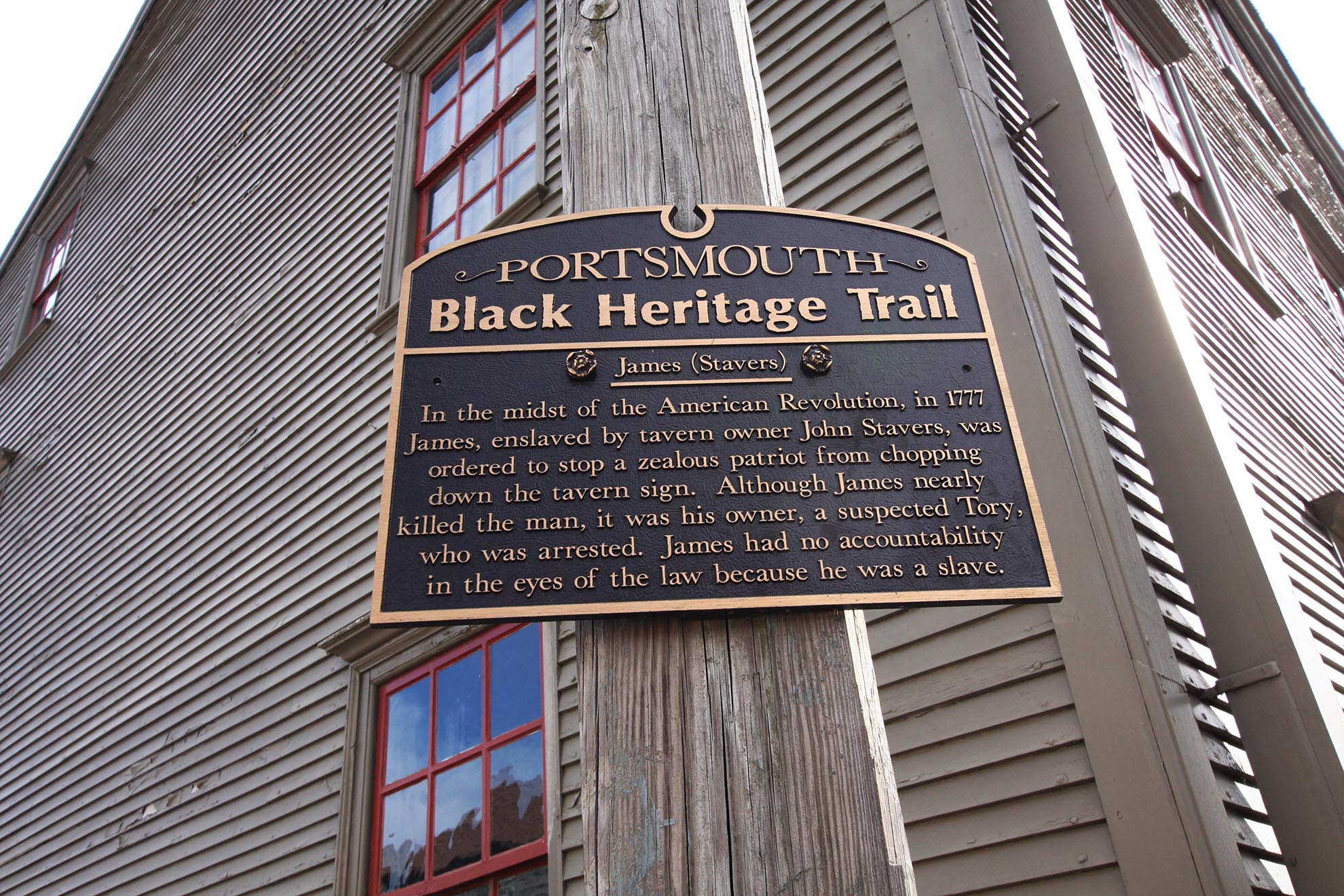
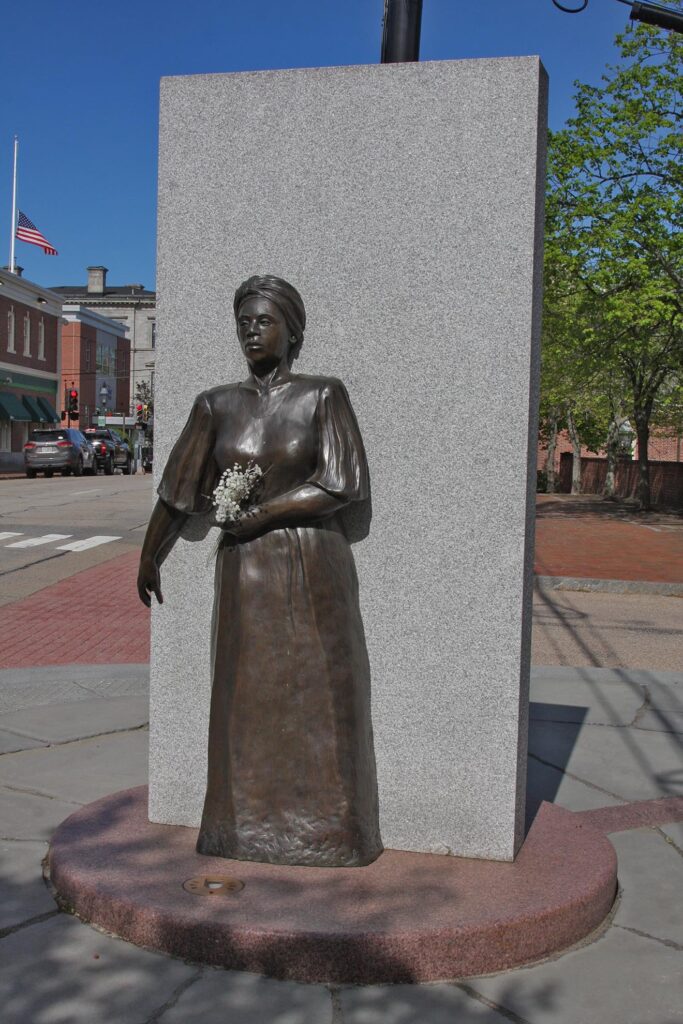
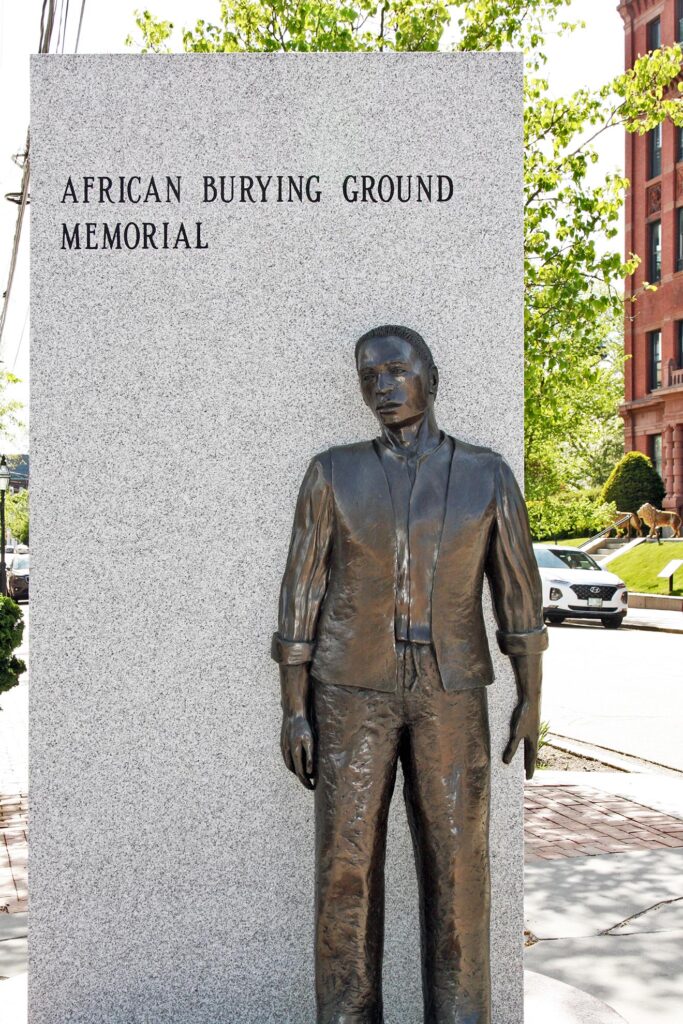
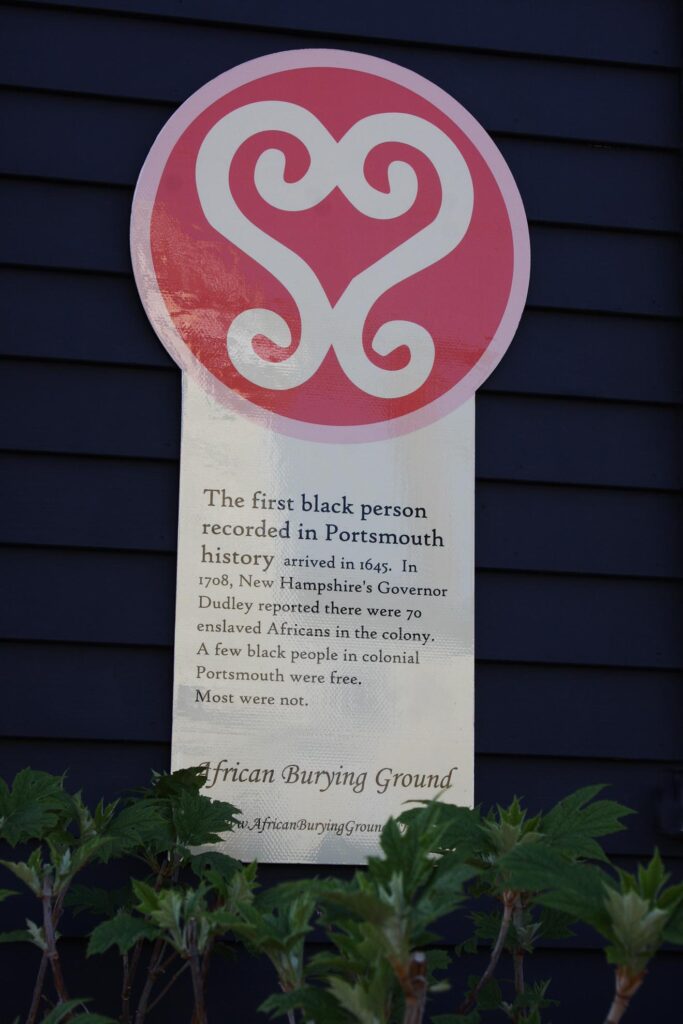
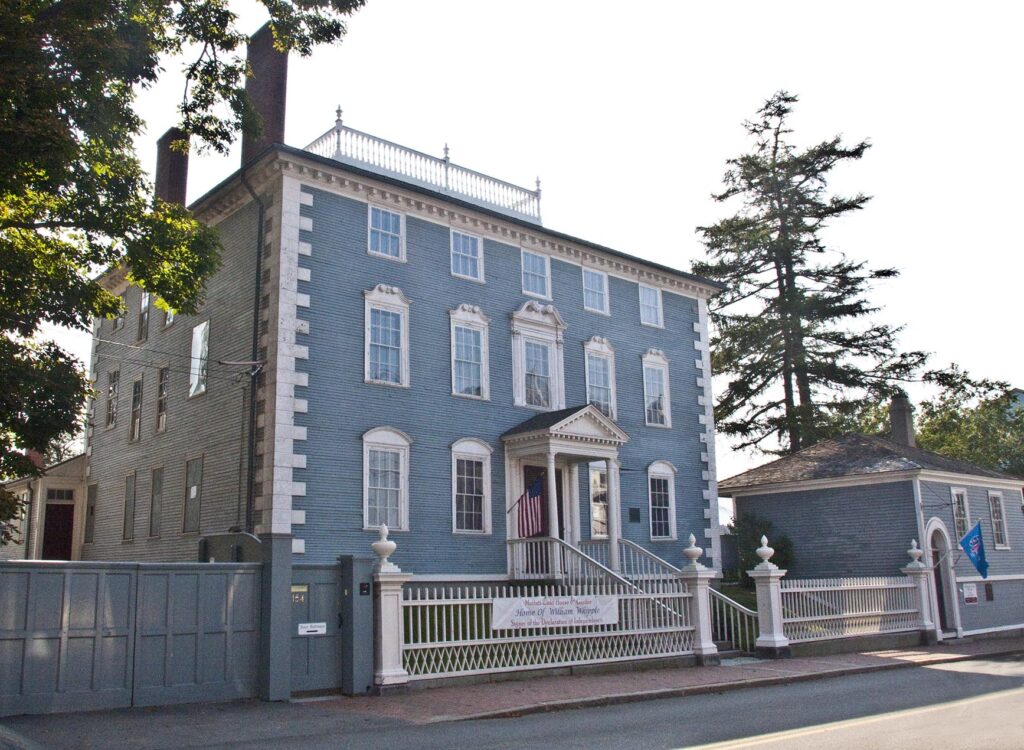
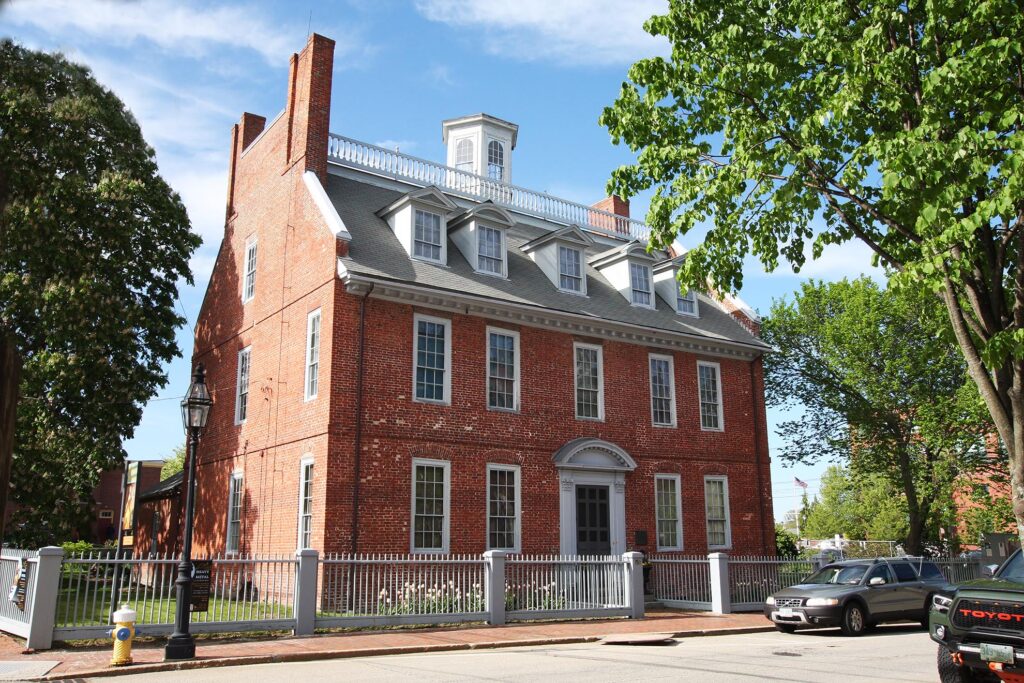
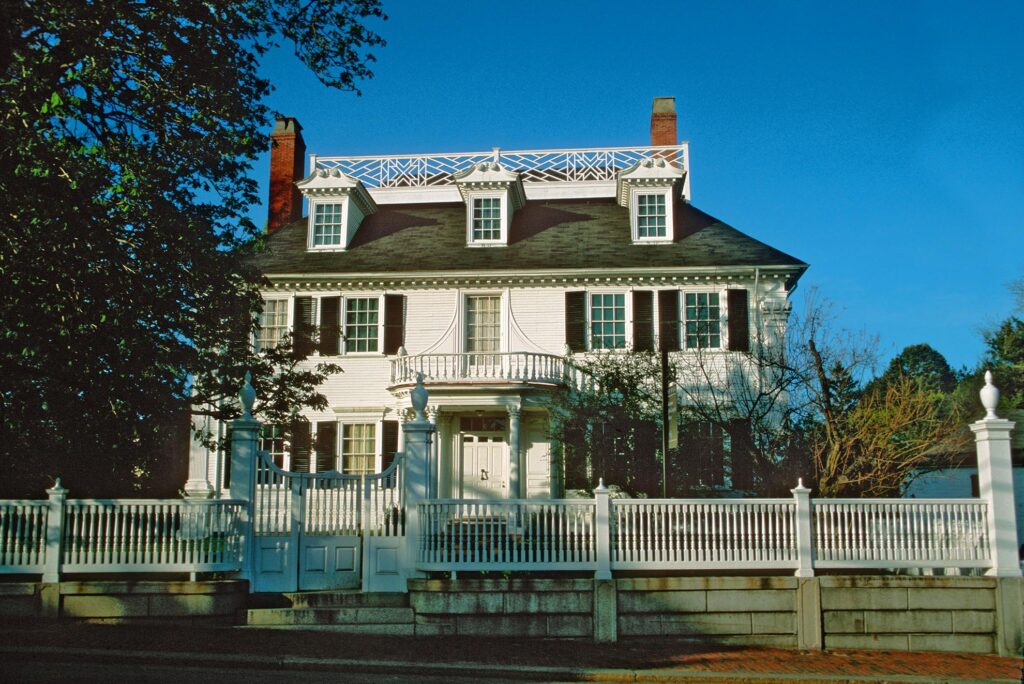
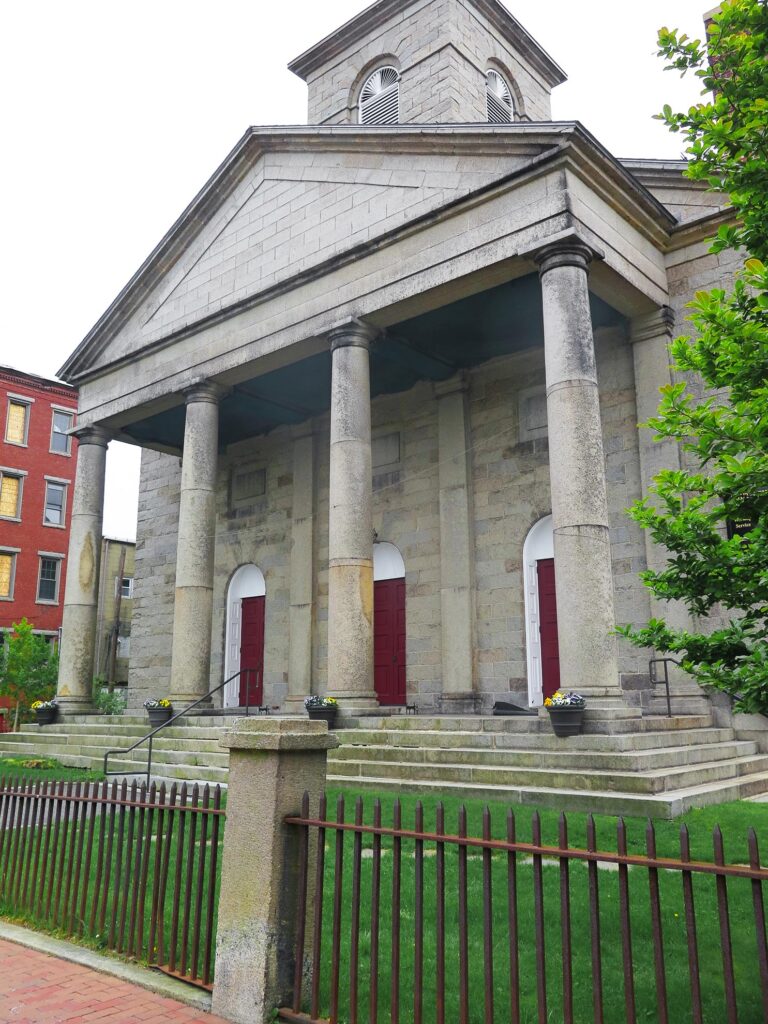
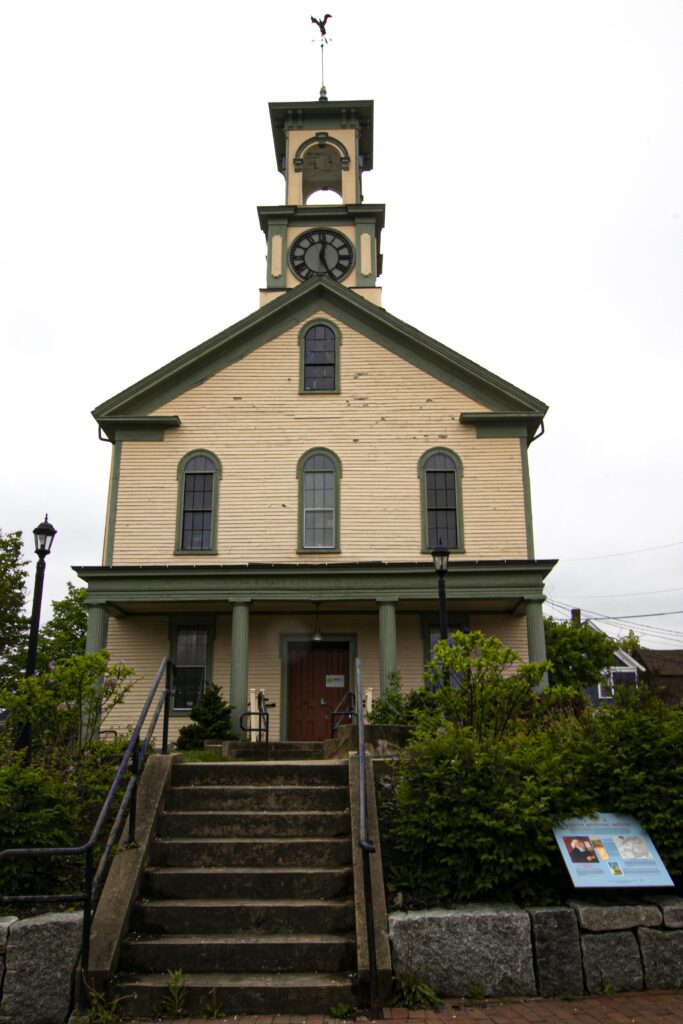
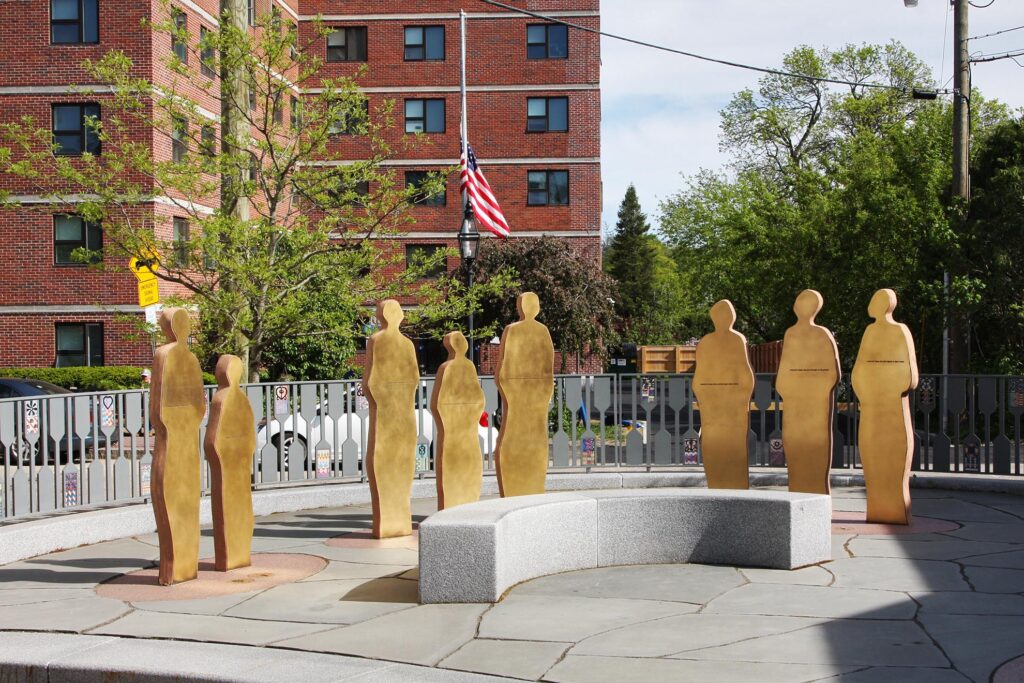
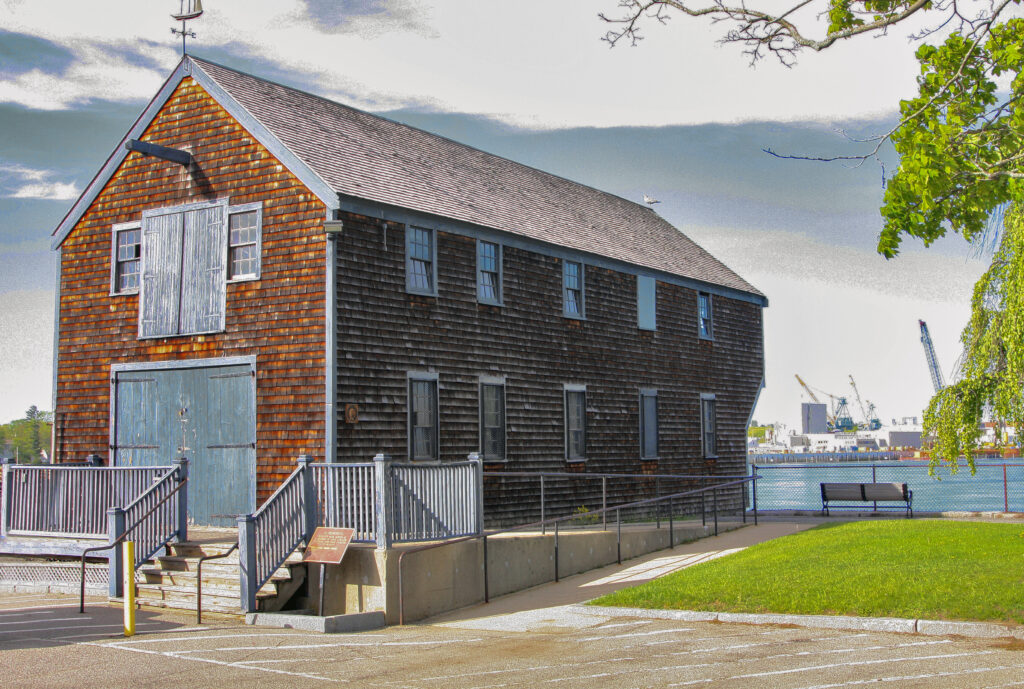
I find it strange that in an article about the Black Heritage Trail of New Hampshire, most of the photos are of the mansions of the slave-owners. Surely this space in the article could have been put to use showing the historical/memorial plaques that are easily found with a brochure from the Trail office. And please note that at “the double-sided statue of an African man and woman touching hands” — their hands are close, but not quite touching. This is very poignant. Fresh flowers are placed in the other hand of the woman year-round.